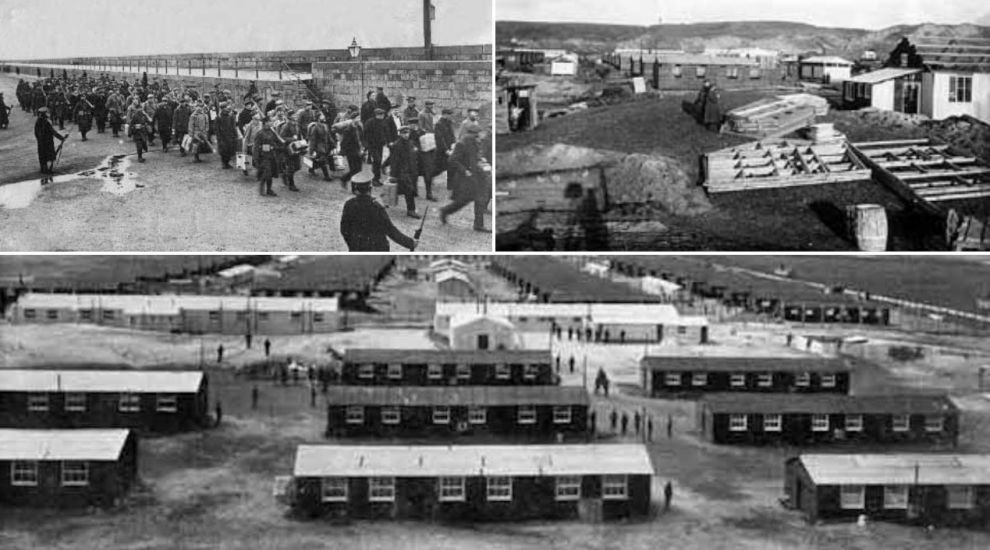


It's well-known that the First World War ended 101 years ago in 1918, but few may realise that this weekend marks another centenary: the date that prisoners of war held in a 'forgotten' St. Ouen camp were finally returned home.
On 5 October 1919 – almost a year after hostilities had ended – prisoners of war interned in Jersey’s ‘Les Blanches Banques’ camp on the sand dunes were finally free to return to their home soil.
Express spoke to historian and reference librarian Heather Morton about this little-known part of the island’s history, as the centenary comes around this weekend...
Heather stumbled upon the camp by pure chance when she was working as a reference librarian. When putting away a map of the bay that someone had been looking at, she noticed some buildings on the sand dunes that she had never seen before.

Pictured: An artist's impression of the prison camp at Le Braye (Jersey Archive).
"Curiosity" got the better of her, and now, several years down the line, she has researched the subject and even written a book about it.
“It was just intriguing to think that here in Jersey we had up to as a maximum 2,000 German prisoners of war in a campsite down near Le Braye.”
The reason for the camp being built in Jersey was due to the British not expecting, nor being prepared to go to war and there was nowhere on the mainland to put the prisoners that were taken on day one of the ‘great' war.
In March 1915, Heather explained, the Lieutenant Governor was asked to build a camp so that Jersey could house some of the German PoW’s taken mainly during naval conflict.
Although the views and landscape of St. Ouen’s Bay may seem picturesque now - Heather speculates that the prisoners “would have been able to watch a decent sunset every night” - but it was nonetheless a place which deprived some 2,000 people of their freedom.

Pictured: A letter sent by the Lieutenant Governor about the PoW camp. (Jersey Archive)
The prisoners were housed in 48 huts and they undertook different activities including going on route marches around the lanes to keep fit as well as maintaining the camp itself.
They were also put to work on surrounding farms, in the nearby St. Peter’s Barracks and loading potatoes onto the steamers during export season.
By November 1918, the hostilities had officially ended, but it did not bring an end to the PoW’s internment.
Heather told Express: “It was the end of the hostilities but there was a huge amount to be done, because there are hundreds and hundreds of soldiers not anywhere near home. The British Army had included people from the dominions – Australia, Canada – that had been coming to support Britain in the fight, so they obviously wanted to get home.”
There were also numerous prisoners of war who had to be returned to their home soil.
“But you couldn’t just simply find enough spare boats to take all these men across the Channel because so many of the ships had been sunk… It was war.”
Pictured: The area of the 'forgotten' camp.
Of course, Heather explained, that the only option at that time was to leave Jersey by sea, but “it took quite a long time for them to be able to produce a boat… and get them back onto their home soil and to freedom again".
“Whilst they were still in the camp they were still prisoners. I guess life went on very much as usual except I guess there was a lot more frustration than there had usually been.”
Almost a year after the official end of the First World War, a German ship called the SS Melillia came to collect the first 900 men on 5 October 1919 and then the rest were transferred a few days later.
“That was suddenly the end of the camp and within weeks the whole place was cleared. All the big army huts had been sold off and a lot of them went to farmers for farmyard buildings – some of them actually even today are still in use.”
Pictured top: Les Blanches Banques prison camp (Mike Bisson/Islandwiki).
Comments
Comments on this story express the views of the commentator only, not Bailiwick Publishing. We are unable to guarantee the accuracy of any of those comments.